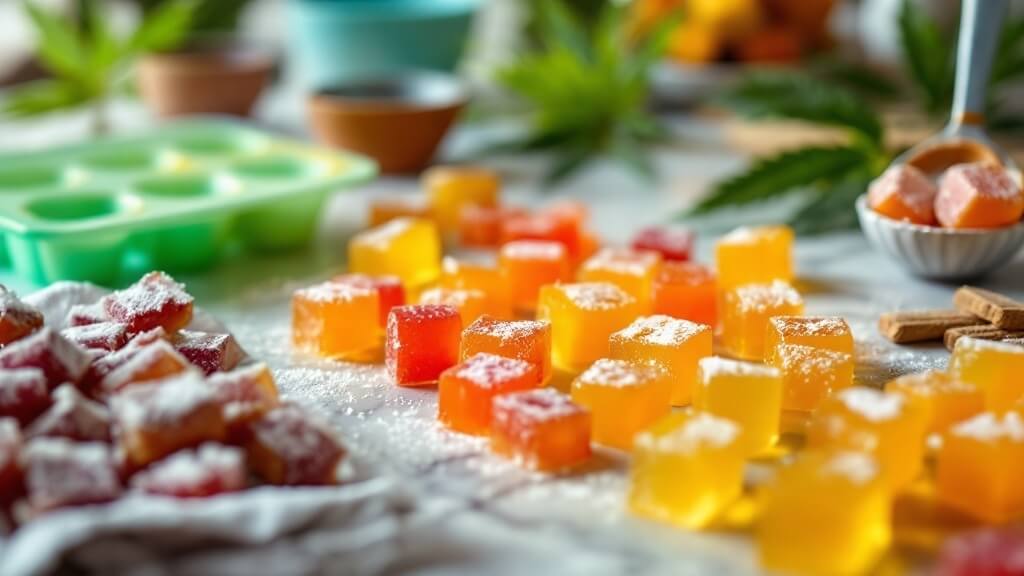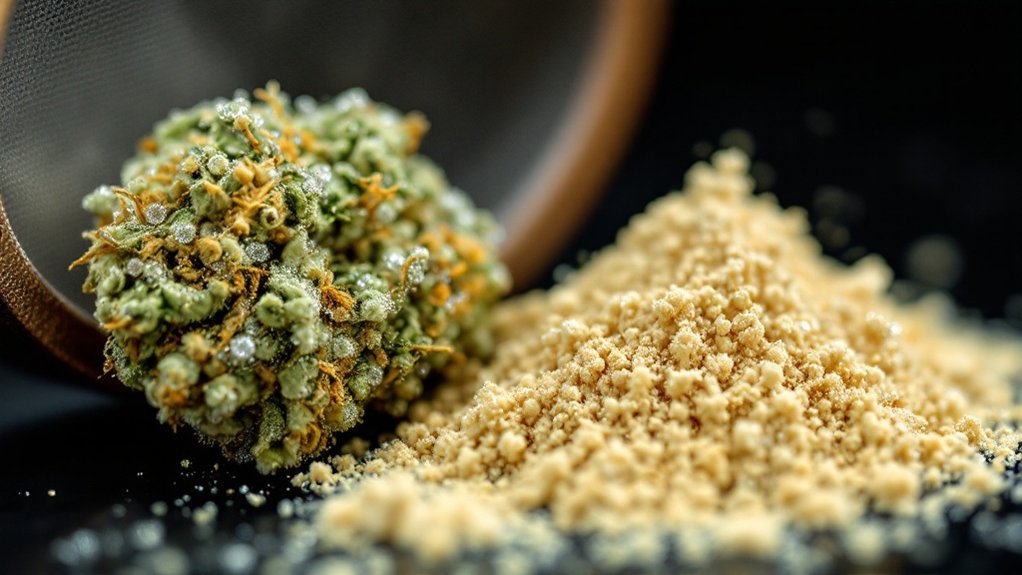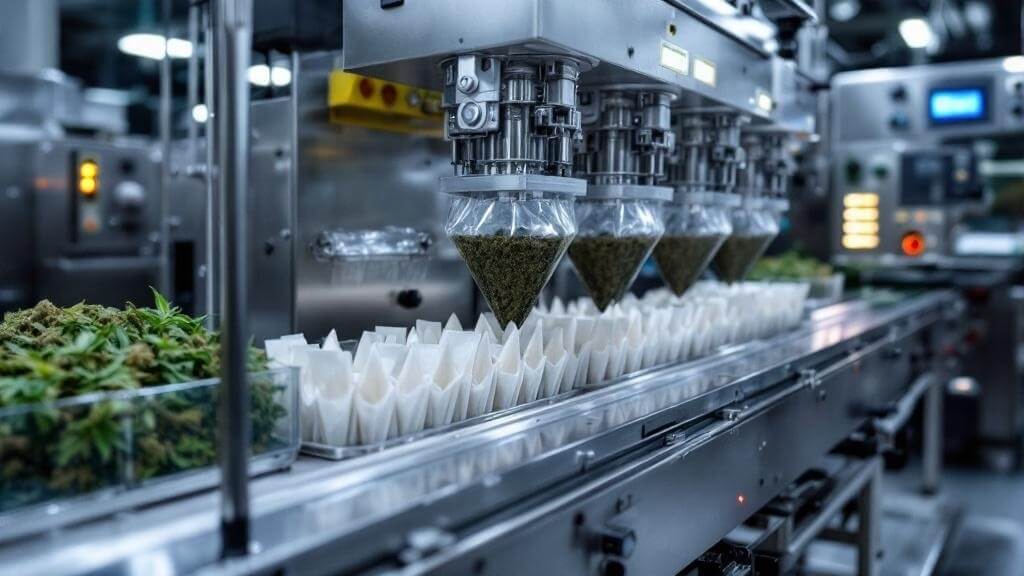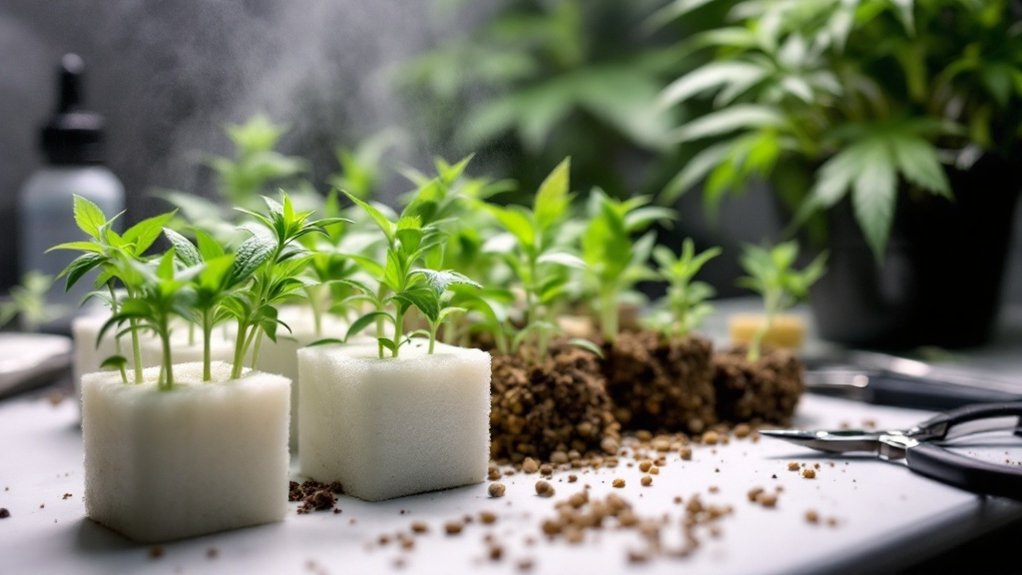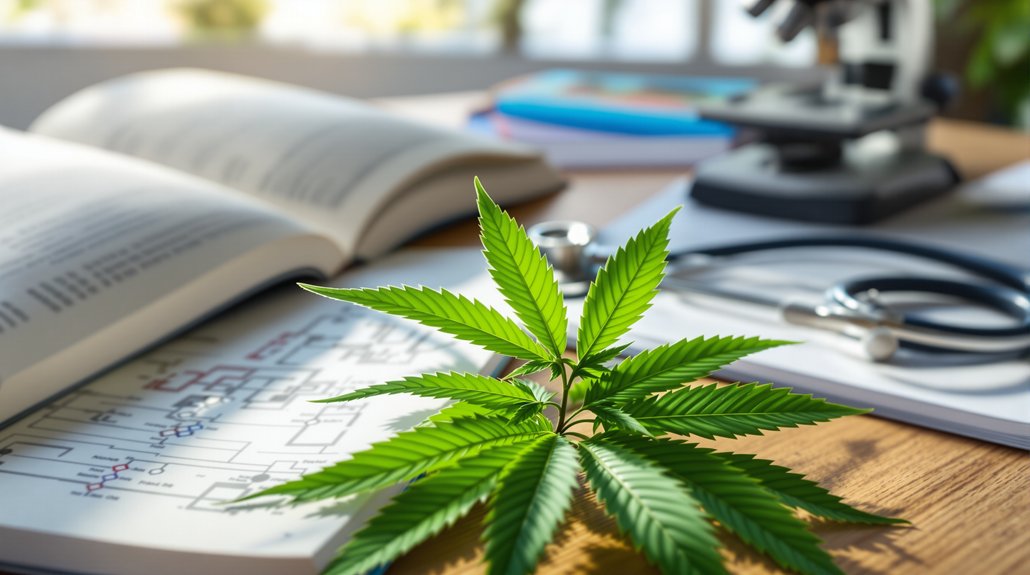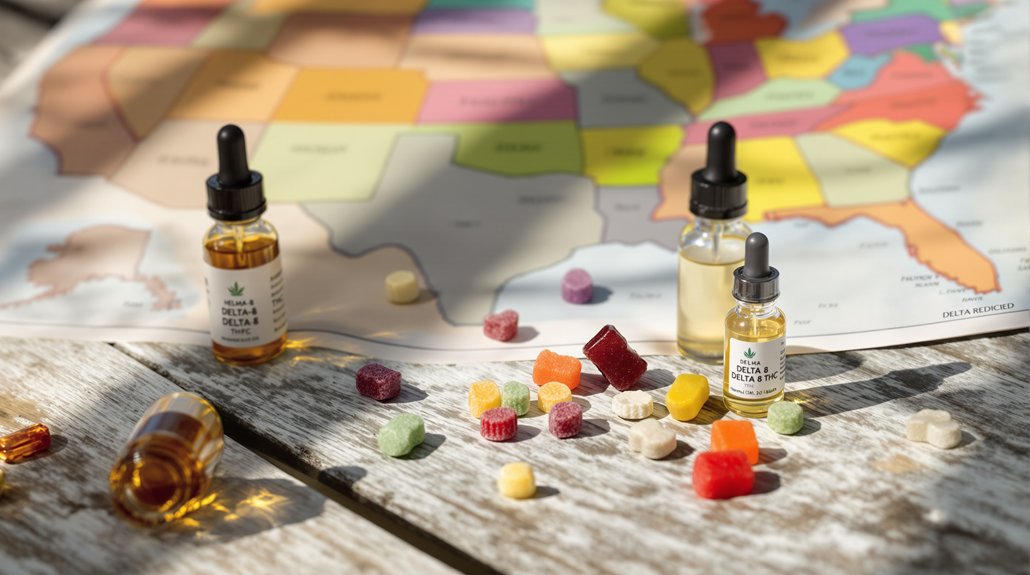To make cannabis gummies at home, first decarboxylate cannabis by heating it at 240°F for 40 minutes. Combine cannabis-infused oil with lecithin in a saucepan over low heat, then add flavored and unflavored gelatin while whisking continuously. Keep temperature below 180°F to preserve cannabinoids. Transfer the mixture to silicone molds using a dropper, refrigerate until set, and store in airtight containers. The complete process reveals surprisingly simple techniques for creating consistent homemade edibles.
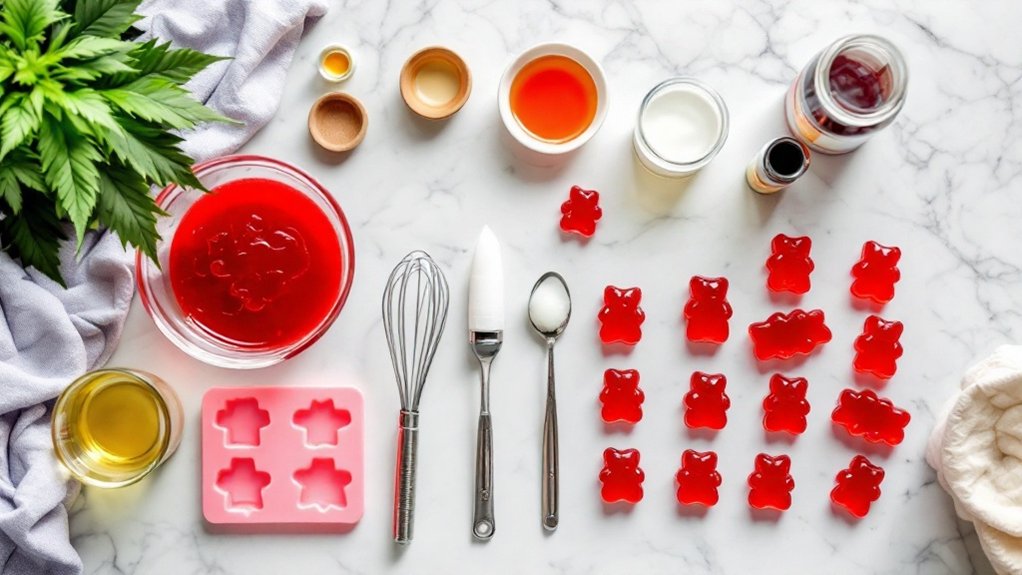
Creating homemade cannabis gummies combines culinary techniques with careful dosing to produce customized edibles that many enthusiasts prefer over commercial alternatives. The process begins with proper cannabis preparation, specifically decarboxylation, which activates the plant’s psychoactive compounds through controlled heating. This vital step converts THCA into THC, ensuring the final product delivers the desired effects when consumed.
Homemade cannabis gummies offer personalized potency through precise decarboxylation, transforming raw plant material into properly activated edibles.
The foundation of cannabis gummies requires both flavored and unflavored gelatin for ideal texture and taste. Flavored gelatin (commonly known as Jell-O) provides the base flavor profile, while unflavored gelatin contributes structural integrity that helps the gummies maintain their shape. Cannabis-infused oil, typically made with coconut or MCT oil due to their high fat content and cannabinoid absorption capabilities, serves as the active ingredient carrier throughout the mixture. Cannabutter can also be used in some gummy recipes for added flavor and potency.
Proper emulsification represents one of the most technically important aspects of gummy production. Lecithin, available in sunflower or soy varieties, acts as an emulsifier that prevents the water and oil components from separating during preparation and setting. Without this ingredient, the cannabis oil may pool unevenly, resulting in inconsistent potency between individual gummies in the same batch.
The mixing process involves combining water, infused oil, and lecithin in a saucepan over low heat, followed by the gradual incorporation of gelatin while whisking continuously. The mixture must never reach boiling temperature, as excessive heat can degrade cannabinoids and compromise the gummies’ medicinal or recreational value. Maintaining proper temperature is essential, as allowing the mixture to boil will prevent the gummies from setting correctly. Natural sweeteners like maple syrup or honey can enhance flavor profiles without introducing artificial ingredients.
Once thoroughly combined into a uniform, lump-free solution, the mixture is transferred into silicone molds using precision tools like droppers or squeeze bottles. Working quickly prevents premature thickening that could complicate the molding process. The filled molds are then refrigerated until the gummies solidify completely, typically requiring several hours.
Storage considerations greatly impact the shelf life of homemade cannabis gummies. Unlike commercial products, these lack preservatives and as a result, benefit from refrigeration in airtight containers. Water-soluble cannabis products offer a significant advantage, as they produce gummies that can take about 20 minutes to feel effects compared to traditional edibles that may require hours. Protection from light helps maintain potency by preventing cannabinoid degradation, while consistent temperature prevents textural changes.
Even with ideal storage conditions, consumption within one to two weeks is recommended for best quality and efficacy.
Frequently Asked Questions
What Is the Proper Dosage for Homemade Cannabis Gummies?
For homemade cannabis gummies, proper dosage depends on individual tolerance and experience levels.
Beginners should aim for 1-2.5mg THC per gummy, while experienced users may prefer 5-10mg.
The total THC content in cannabis oil should be calculated and divided by the number of gummies being produced.
Precise measurement guarantees consistent dosing.
Users should start with lower doses, waiting at least two hours before consuming more, and adjust subsequent batches based on personal effects.
How Long Do Cannabis Gummies Stay Potent?
Cannabis gummies typically remain potent for 6-12 months when properly stored.
The degradation process begins as THC oxidizes and converts to CBN over time, gradually reducing psychoactive effects. Environmental factors greatly impact longevity; exposure to oxygen, light, heat, and humidity accelerates cannabinoid breakdown.
Storing gummies in airtight containers in cool, dark places maintains potency longer. Refrigeration can extend shelf life, while signs of expiration include texture changes, color alterations, and diminished flavor profiles.
Can I Use CBD Instead of THC for These Gummies?
CBD can be directly substituted for THC in gummy recipes with minimal adjustments. The substitution works because both cannabinoids have similar solubility properties and dosing principles.
CBD gummies offer therapeutic benefits without psychoactive effects, making them legally accessible in more regions. When making the substitution, users should maintain the same careful dosage calculations while benefiting from CBD’s non-intoxicating properties.
This approach produces edibles that provide relaxation and potential wellness benefits without the “high” associated with THC.
What Are Signs That My Cannabis Gummies Have Gone Bad?
Cannabis gummies show several distinct signs when they’ve expired.
Visual indicators include color fading or darkening, while texture changes manifest as excessive hardness, stickiness, or visible moisture on the surface.
Unusual odors like musty or sour smells signal degradation, alongside any unexpected bitter tastes.
The cannabinoid potency diminishes over time, with THC converting to CBN due to light and heat exposure, resulting in altered effects when consumed.
Can I Freeze Cannabis Gummies for Long-Term Storage?
Cannabis gummies can be frozen for long-term storage with excellent results. Freezing extends shelf life dramatically while preserving both potency and flavor for up to a year or longer.
For ideal storage, individuals should wrap each gummy separately in parchment or waxed paper before placing them in airtight containers. This method prevents sticking and allows for selective thawing as needed.
The freezer environment also protects cannabinoids from degradation caused by heat, light, and humidity.
